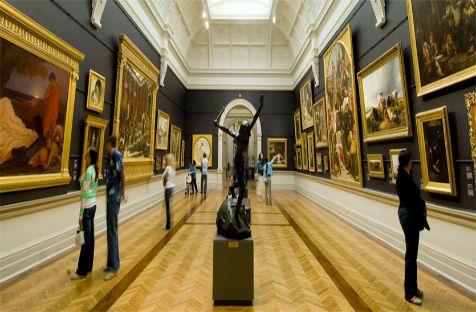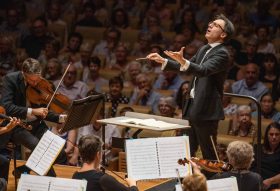Collections and performance spaces are as much an infrastructure as roads and airports.
The collections held in our art galleries and other museums – or ‘keeping places’ as indigenous Australians have described them – are part of the national estate – objects that are held in trust for the nation.
Also part of that estate is the cultural infrastructure, the galleries and museums that house the collections, along with the performance spaces, studios and recital halls and other places where creativity metamorphoses into objects or actions that delight, intrigue or mesmerize us.
We are used to thinking of our highways, dams, ports and airports as vital national infrastructure. It is time we considered the cultural infrastructure as well, as it is critical to our national well-being and to the preservation and development of a vibrant civil society.
Like any physical asset, this cultural infrastructure needs programmed maintenance, renewal and good management and that takes resources. It also makes sound business sense as anyone knows who subscribes to the view that ‘build it and they will come’.
When we talk about the great nation-building infrastructure projects, we tend not to include the cultural elements preferring to talk about the Snowy or Ord River Schemes –or more recently a Very Fast Train.
It puzzles me when public debate turns to infrastructure projects that cultural infrastructure is seldom discussed in the context of the significant economic return that it generates. I argue that many of the users of essential airports and roads are making their way to a piece of cultural infrastructure.
Our political history has bequeathed us a federal system that often encourages us to think of ourselves as, for example, Victorians or South Australians first, and as Australians second. We hear the term ‘competitive federalism’ used by State leaders as they compete to attract investment and provide better services, and State of Origin games are hugely popular sporting events.
We all enjoy the sporting rivalry from time to time, and we can understand the competition to get the best social and economic policy outcomes for particular regions.
In a cultural context, Creative Australia acknowledges that: ‘While we recognise a sense of shared national belonging, we are also firmly grounded in the places we live and the communities that thrive there. Each part of Australia has its own distinctive identity that reflects its geographic location, history and population…’
Exhortations about where Australia’s ‘cultural capital’ is located and references to facilities that are ‘jewels in a city’s crown’ are part of an outdated language focused on the wrong concepts.
Our national arts infrastructure is complex and sophisticated. We are incredibly fortunate in the visual arts that we have Local Government, State and Commonwealth galleries and museums in all metropolitan and most regional centres, contemporary art museums and spaces, art and craft centres, university galleries, artist run spaces, art fairs and biennales as well as an entire commercial and private sector as well. We should speak more often about that broader view and the context in which a collection or an individual work is placed.
I encourage you to be equally proud of your local and your national cultural heritage.
The National Gallery of Australia’s website says: ‘Works in the Gallery are part of Australia’s national collection. They belong to the people of Australia and are preserved and presented for their enjoyment and education.’
This statement does not assert that the works ‘form’ the national collection. By saying the works are ‘part of the national collection’, there is an acknowledgement that collections around the country, those that you work with every day, are also ‘part of the national collection’, that broader national cultural estate owned and shared by all of us.
The State and Regional Galleries have a long heritage of serving their local communities and this is appropriate; as an example, the National Gallery of Victoria is obliged to ‘maintain, conserve, develop and promote the State Collection of works of art;’
At the same time, I know very well from my own experience at the NGV in Melbourne, that it welcomes interstate and international visitors, many of whom become repeat visitors.
I have had the privilege of visiting many of the regional galleries that are members of your association. There too, and perhaps even especially in those galleries, so many of the works do not just capture the spirit of the place, but they encapsulate Australia as a whole and give a great pride in what we have accomplished in this nation.





